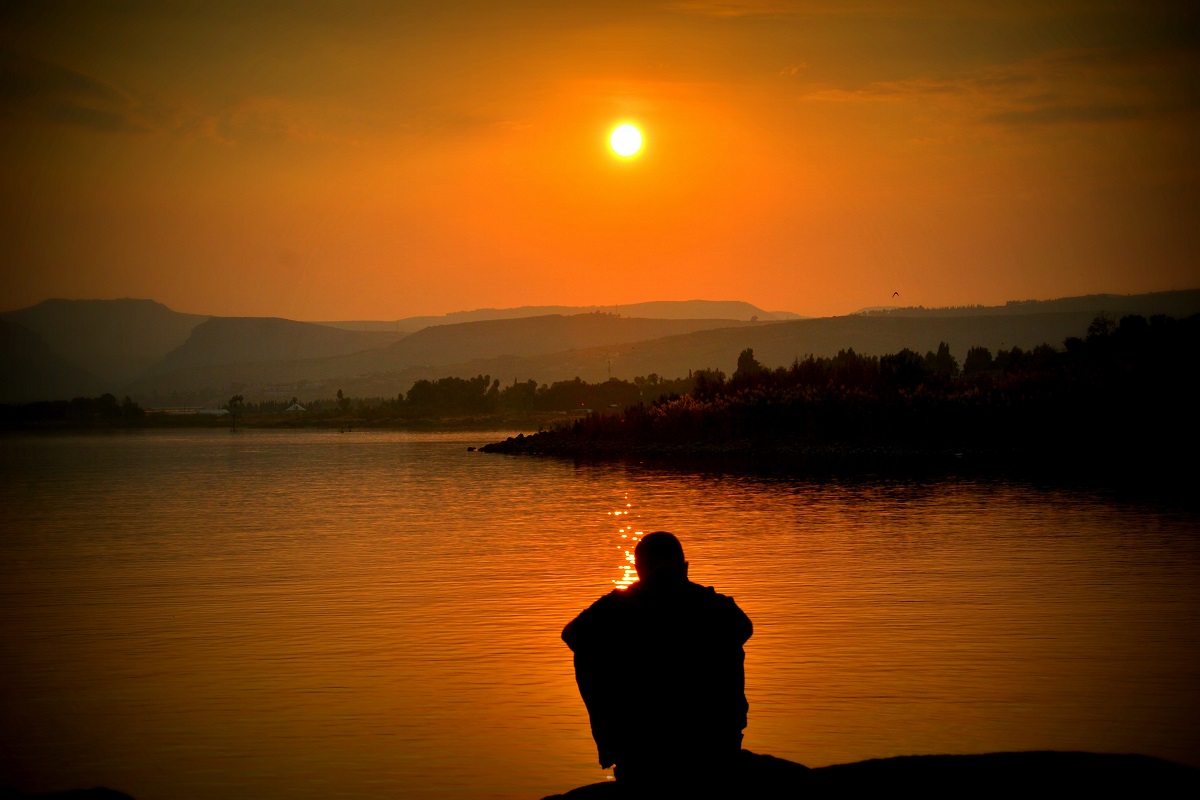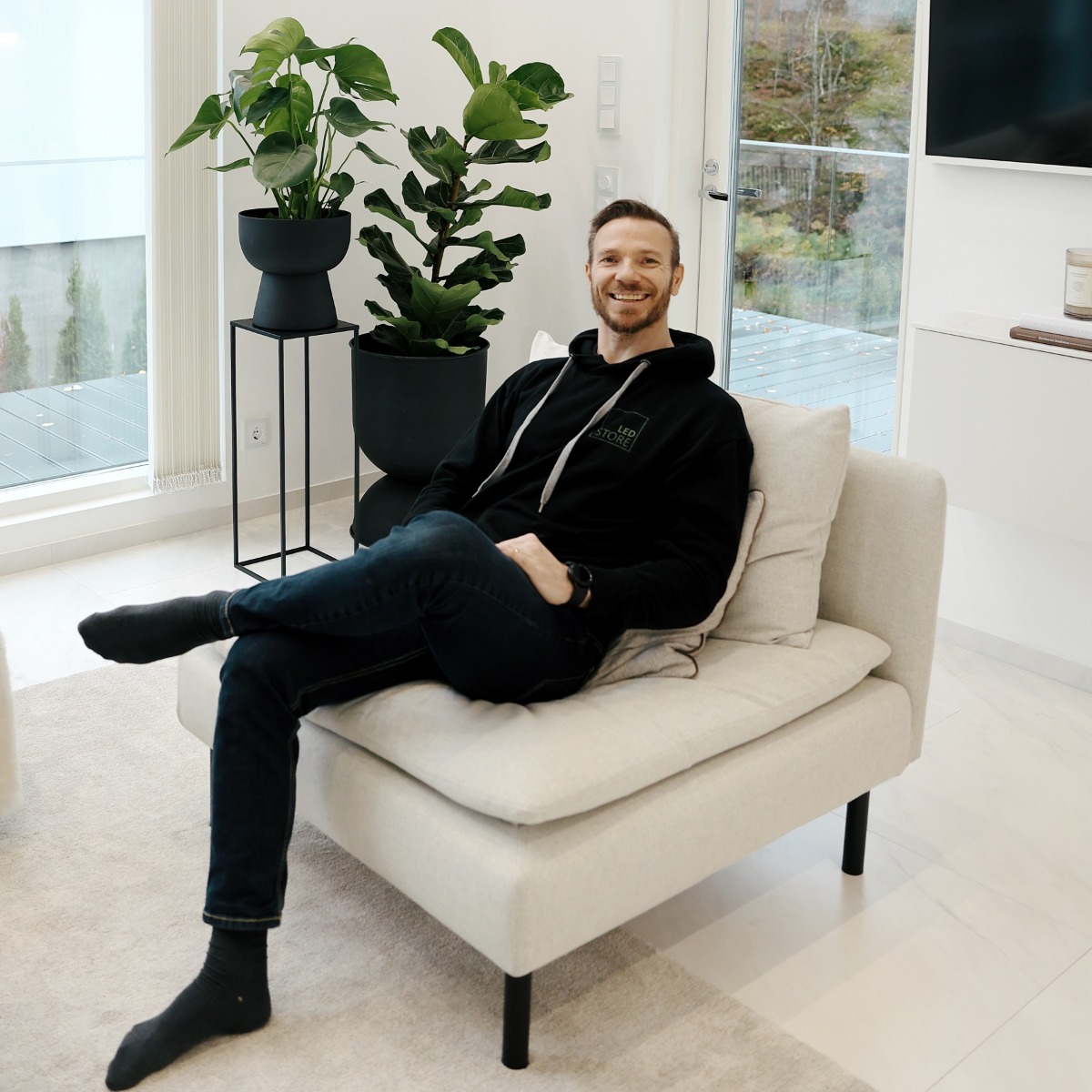What is Seasonal Affective Disorder (SAD)?
Seasonal affective disorder (SAD) is a type of depression that is associated with seasonal changes. It is characterised by symptoms such as low mood, lack of energy, difficulty concentrating and increased sleep and appetite. Symptoms typically start in autumn and continue through the winter months when there is less sunlight. The use of LED lights in the treatment of seasonal affective disorder (SAD) is therefore natural.
SAD is thought to be caused by disruption of the body’s natural circadian rhythm, which is regulated by exposure to light. Although it can occur at any time of year, it is most commonly associated with winter, when days are shorter and sunlight is less available. In the Finnish literature, the disorder is usually referred to as “kamosmasenn”.
Some people may have a milder form of SAD called the “winter blues”. SAD can greatly affect an individual’s quality of life, but it is treatable with therapy, medication and phototherapy.
As we at LedStore are interested in the effects of light and lighting on human well-being, I went through some online articles and put together this blog post. I hope you will gain new perspectives on the possibilities and uses that LED lights can have. I am not claiming that lighting alone has curative or disease-causing effects, we are not health care professionals and LedStore as a company does not offer medical lighting.

Overview of current treatment options and prevention of coma depression
There are several treatment options available for people with menopausal disorder. One of the treatments that has been studied is bright light therapy, where a person is exposed to bright light, usually from a special lamp, for a certain length of time, for a defined period of time. Light therapy has been reported to help balance the body’s circadian rhythm, so it can be an effective drug-free way to improve SAD symptoms.
Psychotherapy, particularly cognitive behavioural therapy (CBT), is also commonly used to help people with SAD. This type of therapy can help individuals identify and change negative thoughts and behaviours that may be contributing to their symptoms. In addition, some people may benefit from a combination of light therapy and medication or light therapy and psychotherapy. It is important to consult a health professional for a proper diagnosis and treatment plan.
Other important ways to support wellbeing include regular exercise, meal times and good social relationships. In addition, proper lighting in areas where people spend a lot of time, such as at home and at work, contributes to wellbeing and helps prevent coma.
How does LED daylight therapy work in the treatment of seasonal affective disorder?
LED light therapy works by mimicking natural sunlight and giving the body the light it needs to regulate its circadian rhythm. The treatment uses a special light-emitting device, such as a light box or visor, which emits light at a specific wavelength and intensity. Studies have looked for differences in the most effective wavelengths and overall luminous efficacy, among other things. The basic idea, however, is that when the body is exposed to bright light, the production of the sleep-regulating hormone melatonin is inhibited. Melatonin is a hormone that regulates sleep, with levels peaking at night and falling during the day. Limiting melatonin levels helps regulate the body’s circadian rhythm, which can improve symptoms such as fatigue, depression and anxiety.
In addition, light therapy has been found in some studies to increase serotonin levels in the brain. Serotonin is a neurotransmitter that helps regulate mood, appetite and sleep. This can help improve mood and reduce depressive symptoms.
How is LED light therapy used?
LED light therapy is usually given in the morning for about 30 minutes to an hour and is recommended under the supervision of a healthcare professional. Light therapy can be an effective alternative treatment or in combination with other treatments and medication. It is important to note that the intensity and duration of therapy varies from person to person. There are also bright light devices for self-treatment and sunrise sunscreens available on the market.
General instructions on how to use an LED light source:
- Use light in the morning: it’s best to use a light bulb as soon as you wake up, as it mimics the natural light of sunrise and helps regulate your circadian rhythm. *
- Sit close to the light: the light must be placed at a distance where you can comfortably read or work while sitting in front of it.
- Use light for a certain period of time: The recommended duration of treatment is usually between 30 minutes and one to two hours, depending on the intensity of the light. The recommended light level is between 2 500 and 10 000 lux.
Do not use the treatment in the evening, as strong light interferes with the body’s natural melatonin production. Blue light emitted by electronic devices can also interfere with melatonin production and affect sleep. So avoid using electronic devices 2 hours before bedtime, or use a blue light filter.
* An exception to light therapy is when the sleep rhythm is advanced so that bright light therapy in the early evening delays the sleep phase. Sleep disorders can therefore take many forms, and consulting your health care provider is important in determining the right treatment.
How light affects the body and brain
The body’s circadian rhythm is primarily regulated by a small area of the brain’s hypothalamus (suprachiasmatic nucleus, SCN), which receives signals from the eyes about the presence and intensity of light. When light hits the eyes, it sends signals to the SCN, which in turn sends signals to other parts of the brain and body to regulate levels of different hormones, such as melatonin and serotonin. When the eyes are exposed to light, especially bright light, melatonin production is inhibited, which can help regulate the body’s sleep-wake cycle.
In addition, exposure to light also affects the pituitary gland, which regulates the production of a wide range of hormones, including growth hormone and the hormone that regulates the body’s metabolism, thyroid-stimulating hormone.
Overall, light plays a vital role in regulating the body’s circadian rhythm, and in turn affects various body functions such as sleep, mood and metabolism. If sunlight is not available, some people may experience disturbances. In Finland, studies have shown that 20-30% of the population experience symptoms of autumn and wintertime heat stroke, but only 1-2% of the population is diagnosed with heat stroke.

What characteristics of LED lights make them useful in therapy?
The benefits of LED technology in light management:
- LED lights emit a high intensity of light, which is important in SAD therapy, as the recommended light level is usually between 2 500 and 10 000 lux. LED lights can provide this level of intensity, which makes them more efficient than other light sources such as incandescent or fluorescent lamps.
- LED lights are small, energy-efficient and long-lasting, making them easy to use and maintain. They can be used in portable light boxes or light emitting devices that can be used at home or on the move.
- LED lights are safe to use and do not emit UV rays that can cause skin damage. They can be used for long periods of time, unlike other light sources such as sunlight, which can be harmful if exposed for long periods of time. (Sunlight also has its own unbeatable advantages, for example in the production of vitamin D in the body.)
Types of LED lights used in therapy
LED lights used in the treatment of Seasonal Affective Disorder (SAD) are typically white or off-white LED lights. These lights emit a full spectrum of light, similar to natural sunlight, and are most effective in regulating the body’s circadian rhythm and increasing the production of mood-regulating hormones such as serotonin. The use of narrow-spectral blue light at lower illuminance levels has also been investigated, but no differences with full-spectral light therapy were found. The sample size was small (N=45).
Again, it is important to note that the intensity and duration of light varies from person to person. Some people may experience eye strain or headaches from prolonged use of lights.
Sources and further reading
The effectiveness of LED light therapy in treating seasonal affective disorder has been the focus of research for almost 20 years: A 2018 study published in the Journal of Affective Disorders, “The effects of low-intensity narrow-band blue-light treatment compared to bright white-light treatment in seasonal affective disorder”, found, among other things, that participants with SAD who received daily LED bright-light treatment for two weeks experienced a significant reduction in depressive symptoms compared to participants who received placebo. The 2016 meta-analysis “Light therapy for non-seasonal depression: systematic review and meta-analysis” concluded that generalisations between non-seasonal depression and light therapy are not warranted, but that bright light therapy would nevertheless be an affordable and effective method for reducing SAD symptoms. A more recent review , “Effekten av ljusterapi vid behandling av säsongsbetonad affektiv sjukdom: En metaanalys av randomiserade kontrollerade försök”, published in 2020 in the Journal of Affective Disorders, analysed data from 19 studies and found that LED bright light therapy is an effective treatment for SAD, and is as effective as other forms of light therapy (such as fluorescent light therapy) in managing SAD symptoms. This article, ” Effekterna av lågintensiv smalbandig behandling med blått ljus jämfört med behandling med starkt vitt ljus vid sub-syndromal säsongsrelaterad affektiv sjukdom” has also been used as a source. If you are interested in Led light therapy for the treatment of seasonal affective disorder, you can find the studies above and read more on the US National Library of Medicine website:
For Finnish websites, see for example. The Health Library has good information on the symptoms and treatment of coma and sleep disorders on the website: coma and sleep disorders.
Många av de nya produkterna är av typen “led lights and health”.
- Can Led lights cause cancer?
- Led lights reduce eye strain
- Do led lights help with depression
- The effects of LED lights on our circadian rhythm
- Led lights improve sleep
Led lighting expert
LedStore has been an expert in LED lighting and lighting design for homes and offices since 2010. We have our own product design, and we manufacture LedStore products with selected producers, so the products are technically top class. We focus on temperature-controlled and high colour rendering (CRI) lights for general and task lighting.
We do around 500 lighting designs for our clients’ sites, improving the usability and comfort of their spaces. Click here to read more or to order a design. We offer a service of custom-made LED strip lighting, i.e. individual, made-to-measure LED strip in aluminium profile for all home and office spaces. Also installed.
We serve builders and renovators, from consumers to contractors, wholesalers and designers. Our store, where all our luminaires can be seen installed, is conveniently located in the Koivuhaa area of Vantaa, Mesikukantie 16, 01300 Vanda.



